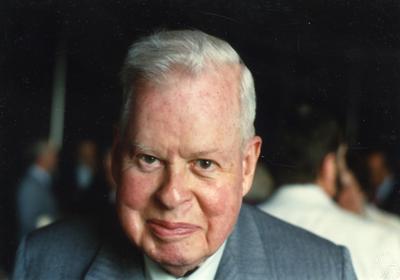<Back to Index>
- Mathematician Raphael Mitchel Robinson, 1911
- Mathematician Wolfram Schwabhäuser, 1931
PAGE SPONSOR

Raphael Mitchel Robinson (November 2, 1911 – January 27, 1995) was an American mathematician.
Born in National City, California, Robinson was the youngest of four children of a lawyer and a teacher. He was awarded the BA (1932), MA (1933) and Ph.D. (1935), all in mathematics, and all from the University of California, Berkeley. His Ph.D. thesis, on complex analysis, was titled Some results in the theory of Schlicht functions.
In 1941, Robinson married his former student Julia Bowman. She became his Berkeley colleague and the first woman president of the American Mathematical Society.
Robinson worked on mathematical logic, set theory, geometry, number theory and combinatorics. In 1937 he set out a simpler and more conventional version of John Von Neumann's 1923 axiomatic set theory. Soon after Alfred Tarski joined Berkeley's mathematics department in 1942, Robinson began to do major work on the foundations of mathematics, building on Tarski's concept of "essential undecidability," by proving a number of mathematical theories undecidable. In 1950 Robinson proved that an essentially undecidable theory need not have an infinite number of axioms by coming up with a counterexample: Robinson arithmetic Q. Q is finitely axiomatizable because it lacks Peano arithmetic's axiom schema of induction; nevertheless Q, like Peano arithmetic, is incomplete and undecidable in the sense of Gödel. Robinson's work on undecidability culminated in his coauthoring with Tarski and Mostowski in 1953 a monograph which established, among other things, the undecidability of group theory, lattice theory, abstract projective geometry and closure algebras.
Robinson worked in number theory, even employing very early computers to obtain results. For example, he coded the Lucas - Lehmer primality test to determine whether 2n − 1 was prime for all prime n < 2304 on a SWAC. In 1952, he showed that these Mersenne numbers were all composite except for 17 values of n = 2, 3, 5, 7, 13, 17, 19, 31, 61, 89, 107, 127, 521, 607, 1279, 2203, 2281. He discovered the last 5 of these Mersenne primes, the largest ones known at the time.
Robinson wrote several papers on tilings of the plane, in particular a clear and remarkable 1971 paper "Undecidability and nonperiodicity for tilings of the plane" simplifying what had been a tangled theory.
Robinson became a full professor at Berkeley in 1949 and retired in 1973. He remained intellectually active until the very end of his life. He published at age:
- 80 "Minsky's small universal Turing machine," describing a universal Turing machine with 4 symbols and 7 states;
- 83 "Two figures in the hyperbolic plane."
Wolfram Schwabhäuser (* May 20, 1931 , † December 27, 1985) was a German mathematical logician working in model theory.
Schwabhäuser studied mathematics and physics at the Humboldt University of Berlin (diploma in 1956, On the completeness of elementary Euclidean geometry), and obtained there in 1960 a Ph.D.under Charles Schroeter (Decidability and completeness of elementary hyperbolic geometry, Journal of Mathematical Logic and Foundations of Mathematics, vol .2, 1956, p.137). In 1965 he completed his habilitation at the University of Münster and after that became a visiting faculty at the University of California, Berkeley (under Alfred Tarski 1965 - 66), and in 1966 a Lecturer at the University of Bonn. In 1969 he became extraordinary professor there and in 1970 professor. Since 1973, he was professor of theoretical computer science at the University of Stuttgart.
Schwabhäuser occupied himself with model theory in geometry, where he worked closely with Alfred Tarski. In 1983 he completed a project initiated by Alfred Tarski and Wanda Szmielew on a book on the meta - mathematical foundations of Euclidean geometry, based on the Tarski axioms.
From 1977 until his death he was managing editor of the Archive for Mathematical Logic.